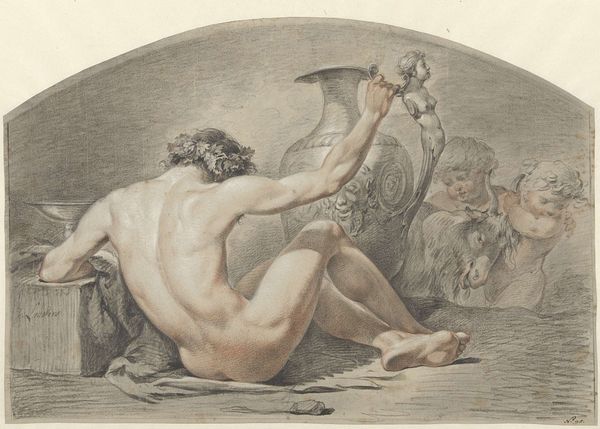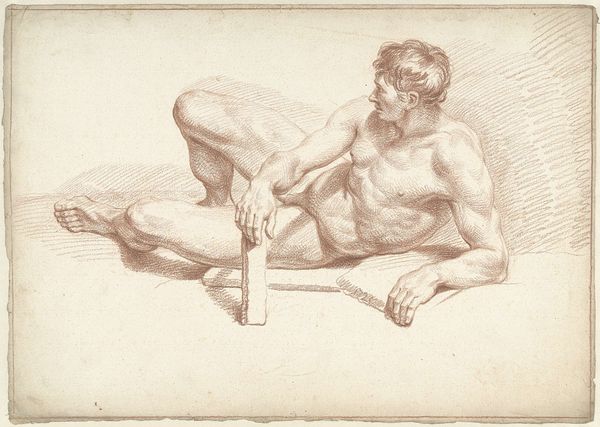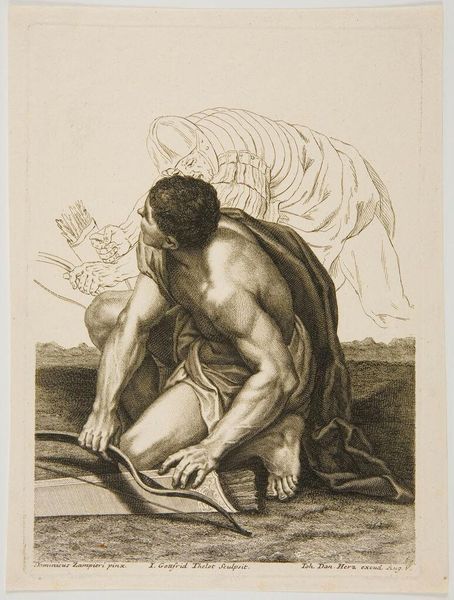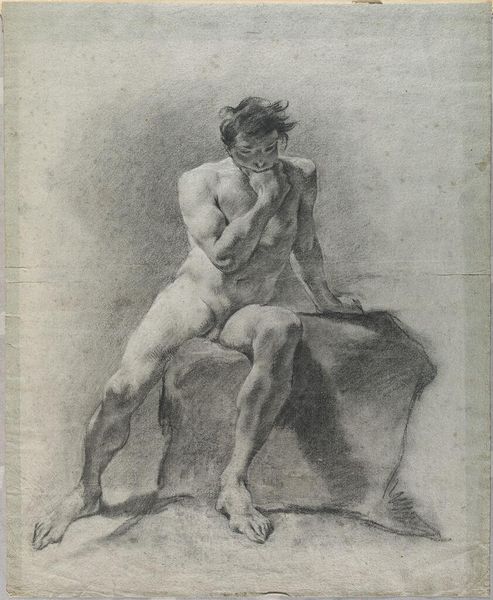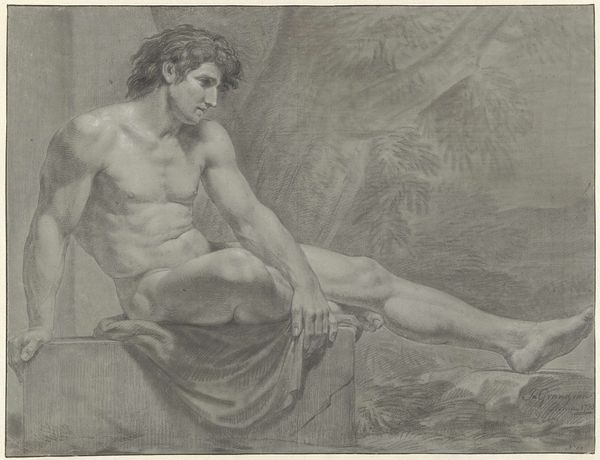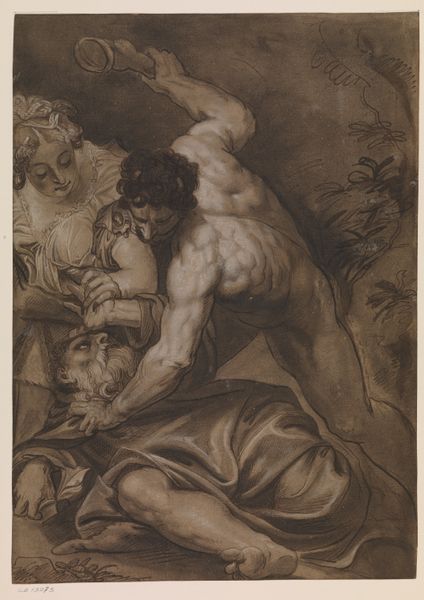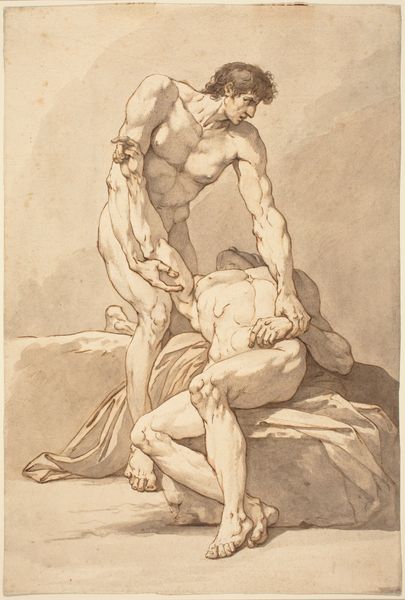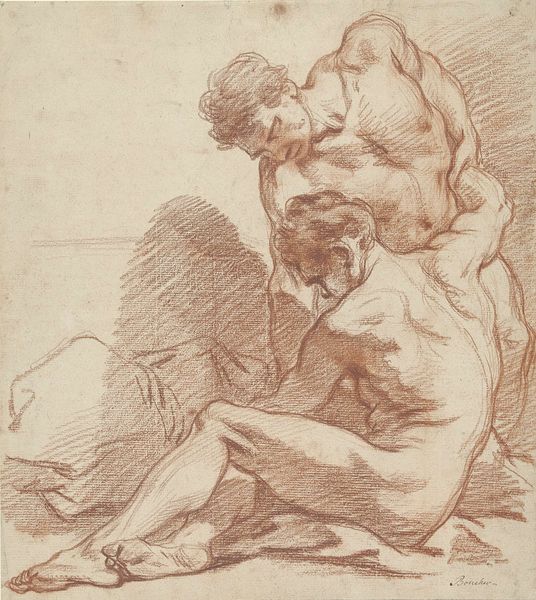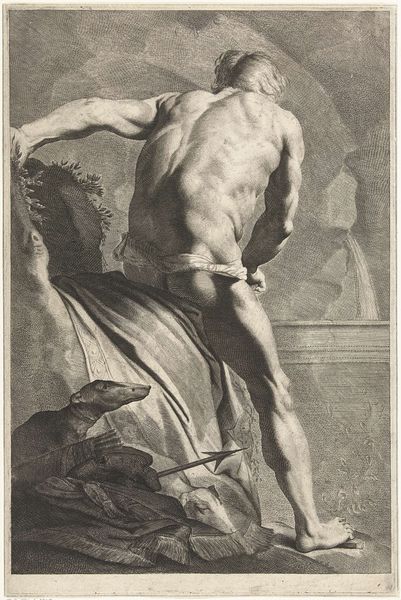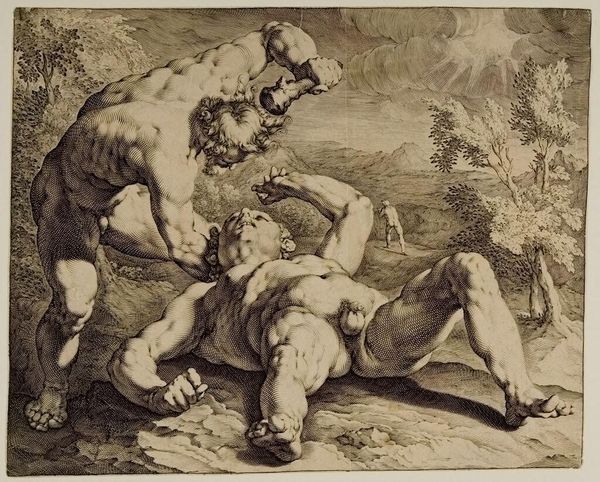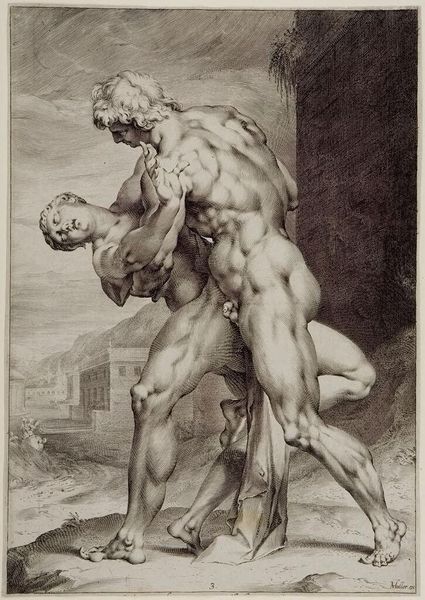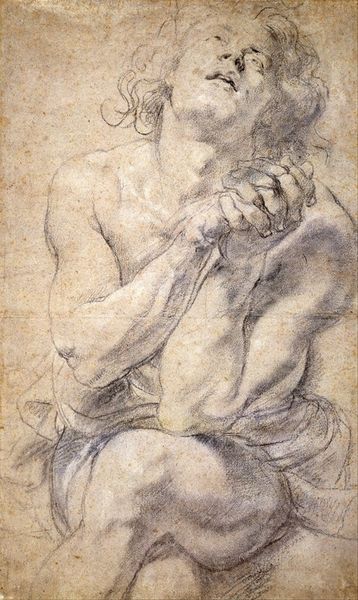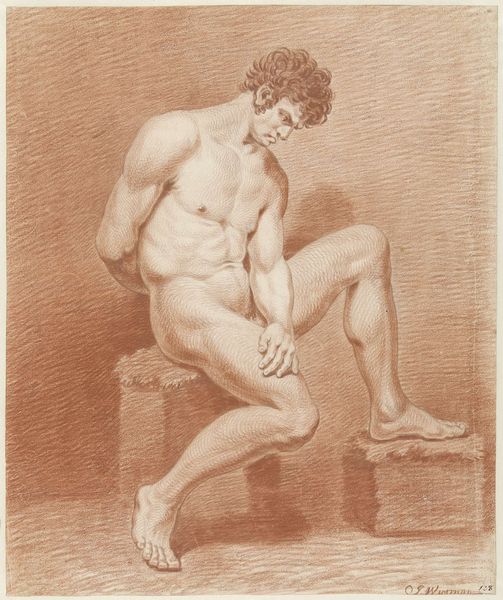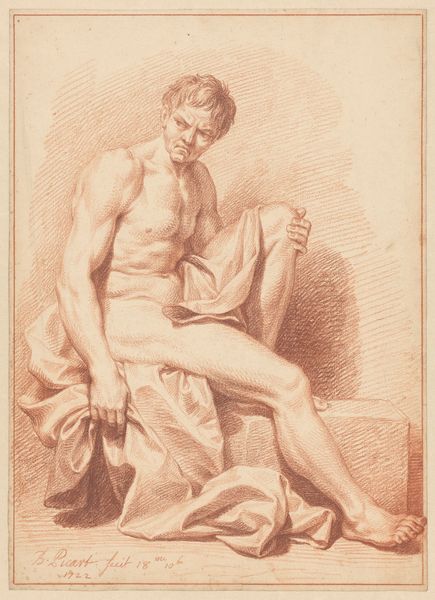
oil-paint
#
portrait
#
allegory
#
baroque
#
oil-paint
#
mythology
#
history-painting
#
nude
Copyright: Public Domain: Artvee
Pompeo Batoni’s “Vulcan” presents a scene steeped in classical iconography. Vulcan, the Roman god of fire and metalworking, is depicted here with the laurel wreath: an emblem of honor, success, and triumph—often associated with divine figures and victors. But this symbol has a long life. In ancient Greece, laurel wreaths were awarded to victorious athletes and poets, signifying not just achievement but also divine favor, linking human excellence to the celestial realm. Over time, the laurel has been passed down through history, shifting in meaning yet retaining its connection to the sacred and the celebrated. Consider, too, the emotional weight of Vulcan's craft. His intense focus, mirrored in the shadowed forge, conveys an internal, psychological state: the mythic creator lost in his work. Batoni captures the enduring power of transformation—the psychological intensity of shaping raw materials. This is a cycle that continues through art history: the transformation of symbols into emotional conduits. Vulcan’s laurel, like so many symbols, reminds us of the cyclical progression of human experience: constantly resurfacing, evolving, and taking on new meaning.
Comments
No comments
Be the first to comment and join the conversation on the ultimate creative platform.
